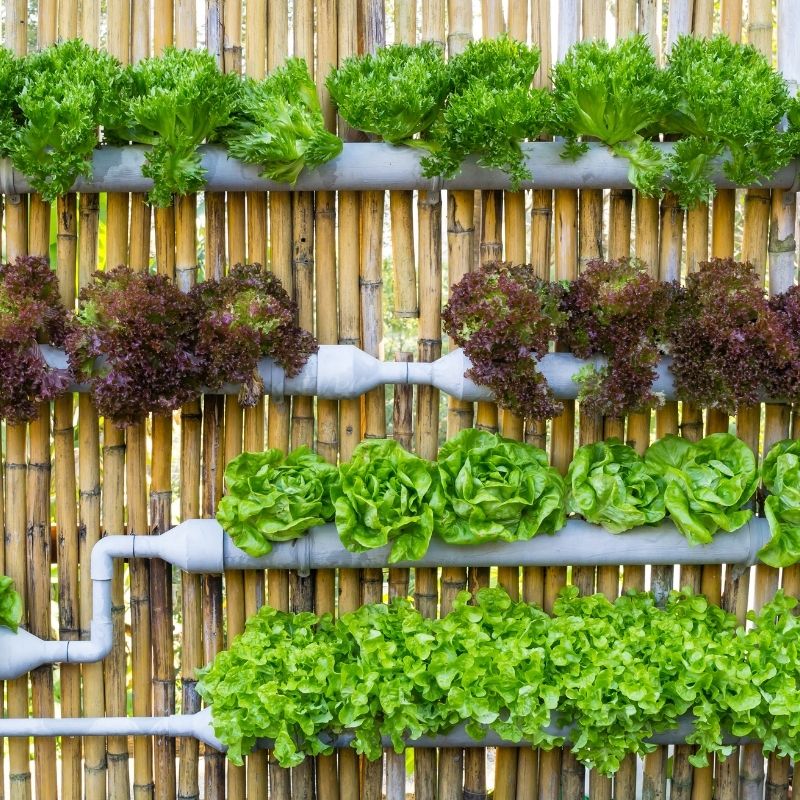 Growing media are different materials other than soil that your plants can grow in with hydroponic systems. Soil comes with some risks such as soilborne diseases and weeds, which are eliminated when using a growing medium for hydroponics. Using hydroponic grow medium instead of soil provides many benefits when cultivating a small home grow garden or even larger crops. When deciding on the best hydroponic system for you, be sure to also evaluate the best medium for that system and what you plan to cultivate in your allowed space.
Growing media are different materials other than soil that your plants can grow in with hydroponic systems. Soil comes with some risks such as soilborne diseases and weeds, which are eliminated when using a growing medium for hydroponics. Using hydroponic grow medium instead of soil provides many benefits when cultivating a small home grow garden or even larger crops. When deciding on the best hydroponic system for you, be sure to also evaluate the best medium for that system and what you plan to cultivate in your allowed space.
Grow media supports your plant roots and stems, although it will not have any of the nutrients that your plants require to grow. All growing media are typically porous to hold nutrient rich water and allow oxygen flow. There are three very important considerations when choosing your grow medium:
WHC – Water holding capacity
AFP – Air-filled porosity
CEC – Cation exchange capacity
The WHC of your media will indicate how well the material holds water to retain moisture. It is important to know the WHC as some systems work better with a lower or higher WHC. Growing media with a low AFP means that it may not provide your plants with enough oxygen which puts them at risk of drowning and rotting. The CEC refers to the amount of minerals in your grow medium, materials with a high CEC may require a special nutrient solution to achieve the right balance for optimum growth.
There is a wide selection of hydroponic growing media to choose from, although some of the most popular are: Rockwool, Perlite, Coconut Fiber, and Expanded Clay Pebbles or Pellets.
Rockwool
Rockwool, also known as Stonewool, is made from volcanic or basalt rock which is melted at a high temperature and then spun into thin, long fibers which are compressed into bricks or cubes. Rockwool is a widely used hydroponic growing medium that brings many benefits such as good water retention and air flow for continuous oxygen. Some drawbacks of rockwool are that it is non biodegradable and must be properly disposed of causing some eco-conscious growers to choose another grow medium. Another drawback is that the dust given off from rockwool may cause irritation to your eyes and lungs. It is a good idea to wear gloves, goggles and a dust mask when handling this fibrous material. Rockwool should be presoaked in water with a pH of 5 to 5.5 for 24 hours, this is necessary to offset the naturally high pH of the medium and will make it safer to handle. In light of these precautions, rockwool is still a good choice for hydroponic growing medium and works well in almost any system like ebb and flow, deep water culture (DWC) and just about any system except aquaponics.
Perlite
Perlite is another common growing medium formed from volcanic glass under intense heat. It is very lightweight and porous with many tiny bubbles that provide excellent aeration. You should also get this material wet prior to working with and wear dust protection as it poses inhalation risks. Perlite is typically not the choice for strong watering systems like an ebb and flow as it can be quickly washed away and is better used in a hydroponic wicking system. Because of this, perlite is rarely used alone but often in conjunction with other growing media like vermicule, coco coir or soil and works well in drip and aeroponic systems.
Coconut Fiber
Coconut fiber, also called “coco coir”, “cocopeat”, or “coco-tek”, is a natural fiber made from the brown husk surrounding the coconut shell. Coco coir is an efficient hydroponic growing medium that has a high WHC to hold water very well and also provides good AFP to save plants from drowning. Coco coir does not drain too well so some growers prefer to mix it with other growing media like perlite or expanded Clay pellets.
Coconut fiber is environmentally friendly and renewable and can be easily disposed of or composted. Coco coir works well in ebb and flow, drip and aquaponic systems.
Expanded Clay Pebbles
Expanded Clay Pebbles, also called “lightweight expanded clay aggregate” or “grow rocks”, are created by heating and expanding Clay to form tiny, round balls. They are lightweight and porous, yet heavy enough to provide strong support and provide good wicking to get nutrients to the plant roots. They drain very quickly, however, requiring frequent irrigation. Because of this they work well in ebb and flow and deep water culture (DWC) hydroponic systems where roots are continually exposed to water.
These are just four of some of the most common hydroponic growing media, additional choices include sand, gravel, wood chips/fibers, pumice, rice hulls, starter plugs and others. Ask your hydroponic growing expert at RainMakers Supply for help in choosing the best hydroponic growing medium for your system.
RainMakers Supply is a leading hydroponic grow store in the Chicagoland area, offering high-quality hydroponic growing equipment, supplies and growing media. Our horticulture experts offer excellent customer service and tips on choosing the right growing system and media for you. Contact us with any questions on choosing the best growing medium for your hydroponic system.
